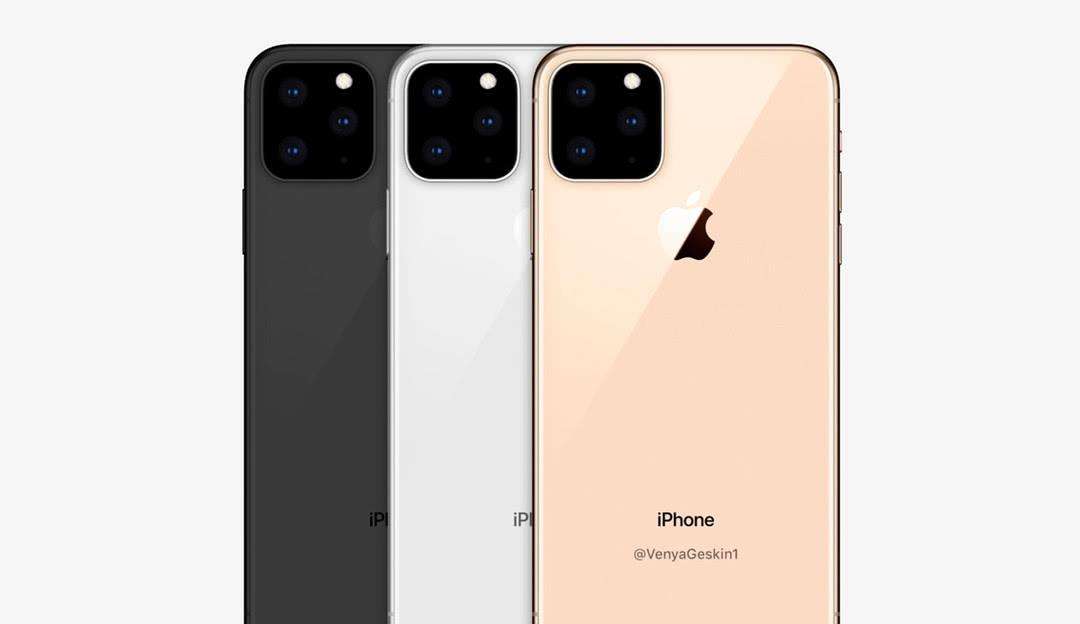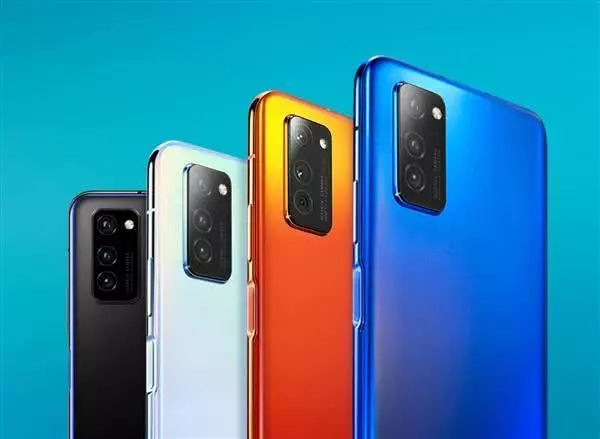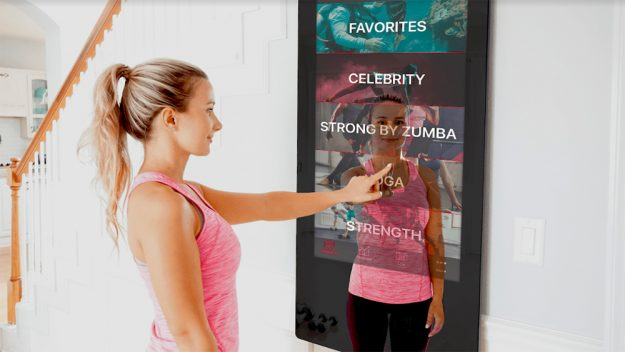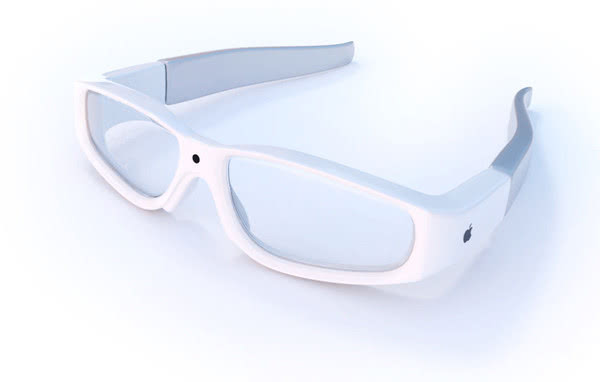2020, you have an industrial design express, please check it...

2019 have less than a week left.
I believe everyone's favorites, mail boxes and notification boards have long been filled with all kinds of 2019 inventory. Moreover, as the bell of the New Year is getting closer and closer, various trend forecasts about 2020 are also becoming popular.
Naturally, the design industry can't stay out of it. The great gods on Behance, Dribbble and Medium are haunted. At that time, they are dazzled and really don't know who to listen.
Of course, the wild flowers outside the wall are all other people's. However, they are not worthless, such as animation, voice user interface, AR / VR interaction, cross-device synchronization and personalized design. However, industrial design is different. They pay more attention to design details and environmental changes, what we need to pay attention to is the change of the whole user consumption scene of the product.
The two are not so much isolated from each other as they complement each other.
Better detail design has achieved the ultimate in user experience, which requires us to actively explore and innovate in hardware ecology.
More radical product design brings new possibilities to user experience, which requires us to timely feedback to the software ecology to release its potential.
At present, the popular "Dark Mode" dark mode is an over-design in hardware-an extreme "optimization" in details after the full screen experience is mature ".
Once upon a time, the green characters on the dark screen were all we had. Today's display technology is naturally not the same as that of that old age, but the reappearance of the dark pattern: in 2018, it began to show a trend of "crows are generally black in the world" in 2019. On the contrary, there is an illusion of returning to the basics.
For this design trend that relies on hardware quality to force software experience to "upgrade", it is a pity that the depth mode was not invented by Apple. However, it is undeniable that as a high-tech company that plays "usage doctrine" superbly, it is indeed the release of Apple MacOS Mojave that once again puts the dark mode under the spotlight.
In June 2018, Apple released the new system macOS Mojave at the Global Developers Conference. Users can set the night mode by themselves, or the system can decide when to activate it.
In October 2018, Microsoft added a new black theme to the system in the October update of Windows 10.
In March 2019, Google released the first beta version of this year's new Android system, Android Q, bringing a global dark mode.
In June 2019, Apple announced at the Global Developers Conference that iOS13 officially introduced Dark Mode. This version of iOS brings a new "dark mode" to iPhone and iPad ".
MacOS and Windows 10 take advantage of the situation on the PC side, while iOS and Android Q take advantage of the general trend on the mobile side. The "blackening" of more than 100 million-level apps such as Twitter, Messenger, Inatagram, Google Chrome, Microsoft Edge and Office mobile versions has added fuel to the fire.
In China, it is subject to three major systems, EMUI10, WeChat, DingTalk, Taobao and Youku have also embraced the dark mode one after another. In addition, Spotify, Netflix and Steam also have their own dark aesthetics that complement each other.
It seems that overnight, the whole world has been "stylized" by dark patterns.
Just like our admiration for minimalism in the era of Jobs, Jobs found the "winning method" of industrial design. This time Cook finally raised his eyebrows after Liu Haiping was abandoned. Although the iPhone 11 is not as hard as 5G, the appeal of Apple's ecology is still the existence that most people need to look up.
Under the appearance that the dark pattern is popular, who said that Apple has no plans to "go dark" in 2020?
Although the iPhone 12 currently exposed is still mediocre, as the first show of the Apple series in the 5G era, we may be able to look forward to it on killer applications.
Returning to the dark pattern itself, why did the apple detonate this gust of wind?
Apple relies on iOS and macOS, two nails deeply embedded in the mobile Internet and desktop Internet, and naturally has an absolute right to speak. Under its order, it endorsed with a market value of 1.26 trillion US dollars and substituted in the context of Apple's "doing everything right", the dark pattern naturally became a major design trend.
Rather than saying that the dark mode is alternative and beautiful, the biggest niche of the dark mode is that it can save electricity, which is naturally a joy for Apple, which has a "genetic disease" in terms of battery life.
For users themselves, they use dark mode not because it is cool, cool and energy-saving, but because dark mode can provide a quiet atmosphere and let us focus more on the screen in front of us.
Other brands have learned a lot. When only the camera is left in the mobile phone industry design, they naturally actively and passively join the dark mode of the big camp. Since everyone feels good, we can't let Apple specialize in the past.
As for those media that are still emphasizing the dark mode of eye protection, this is "adding drama" to themselves.
Yes, the night viewing mode can greatly reduce the brightness of the blue sub-pixels in the screen pixels of the mobile phone or even completely turn them off, thus reducing the harmful blue light that affects melatonin secretion in the electronic screen. As a result, the screen will turn yellow. However, a study by the University of Manchester shows that the eyes react more strongly to yellow light than to blue light, that is to say, the benefits of reducing blue light are completely offset by yellow light.
This is obviously contrary to Cook's statement in 2018 that he did not want people to indulge in mobile phone screens.
Perhaps, it is difficult for us to usher in the "big explosion" of hardware innovation in a short period of time, but the breakthrough in the details of user experience can still be expected.
(1)
Matrix camera
○

Although we have heard countless times that 2020 will open the Internet of Everything, there will be earth-shaking changes in smart wear, smart home, smart travel and smart cities; but before that, before the new universal terminal "replaces" mobile phones, Mobile phones are still the most successful and mature industrialized products.
Moreover, as the broadest "experimental field" of 5G, smart phones will be the only "protagonist" for a long time before the beginning of the 5G era; in this context, the "redesign" of mobile phones is naturally The current "main theme".
Although there has been no absolute change in the mobile phone since the iPhone redefined the smart phone in 2007. We repeated it over and over again until the larger and more complete "full screen" was digested by major manufacturers, needless to say the annual update on the chip. The camera once became the focus of the arms race.
At the beginning of 2019, Huawei and Xiaomi were still snatching 48 million pixels.
In the middle of the year, vivo, OPPO, Samsung and Red Rice rushed to release 64 million pixels.
After Lenovo's four-shot "0.1 billion-pixel" joke, Xiaomi released its 0.1 billion-pixel phone in November with Samsung's blessing.
I'm tired of playing simple digital games, and everyone is busy "turning on" the camera again. Attempting to use AI algorithm to load some functions on the camera such as night shooting, anti-shake, blurring, zooming, etc. onto the mobile phone, after nearly 20 years, today's mobile phone post-shooting finally derives a "small ecology" with a clear division of labor such as periscence, TOF, ultra-wide angle and telephoto lens ".
The post-camera of the mobile phone has also accelerated the transition from the original Cyclops and Minions to the Schwarzenegger era.
However, after Apple's late three cameras brought a new camera experience, the "wild and unruly" shape seemed to open up the two channels of Ren and Du at once, and various "matrix cameras" began to blow out.

The first to appear is Samsung's Galaxy M30s released in India in September. This low-end and medium-end mobile phone uses rear three cameras, with a main camera of 48 million pixels, as well as a 8 million-pixel ultra-wide angle lens and a 5 million-pixel depth of field lens.

Next is the nut PRO 3 released by Hammer Technology at the end of 10. It adopts a "corner-shaped" four-camera design. Its main camera is 48 million pixels, Sony IMX586 sensor, F1.75 aperture, 8 million pixels telephoto lens, supports double optical zoom, ultra-wide angle lens is 13 million pixels, viewing angle is 123, macro lens is 5 million pixels, and supports minimum 2cm focusing.

In November, Rongyao V30 became the industry's first full-system mobile phone supporting 5G dual-mode nationwide. The V30 series brought Matrix Camera "Camera Matrix" technology: 40 million pixel main camera 8 million pixel ultra-wide angle 8 million pixel telephoto three-camera lens module. The main camera is an exclusive depth customized Sony IMX600 with RYYB filter array for glory, which can achieve good photographing effect in ultra-dark light environment.

In addition, there are also Huawei P40 and P40 Pro renderings exposed by well-known informants Onleaks in December. Both flagship models are made of matrix cameras, of which P40 rear Leica has four cameras, and the number of P40 Pro cameras is temporarily uncertain. Rumor has it that it has five lenses.

The team of Lets Go Digital and Concept Creator recently exposed the latest details of Samsung's Radical Galaxy S11. The details in the rendering they created are clearer than those of the P series: S11e series 64 million pixel main camera with 2x optical zoom, 12 million pixel wide-angle lens and 12 million pixel ultra-wide-angle lens; S11 and S11 + series 108MP Samsung ISOCELL Bright HMX, 5x periscope zoom camera, 3D ToF sensor, the smaller Infinity-O front camera has a total of 5 lenses.
I believe that under the initiative of Samsung and Huawei and Apple's "slow motion" as usual, matrix cameras will become the strongest sword in the "anti-iOS camp.
Although the number game of matrix cameras is now played like the pixel game of the past, not necessarily the larger the number, the better the experience, but there is no denying that the new "number" has added new possibilities to the camera. Everyone is no longer limited to the influence of post-camera on the overall structure, and it is most meaningful to start drastic reforms.
So, is it enough to have periscope, TOF, ultra-wide angle and telephoto lens for the rear camera of mobile phones?
Obviously, at this stage, we still have the phased task of "developing" VR cameras on the rear camera of mobile phones. After all, smart phones are still the most efficient human-computer interaction portal at this stage.
②
Folding screen
○
We don't know where the matrix camera will go in the future, and most people may not care much about it. Because it may be difficult to surprise people before the "VR camera" appears.
However, the potential of the camera is not the only one that can be tapped in the mobile phone. At least in the form of the mobile phone, besides the full screen and folding screen, it still makes everyone think about it.
According to Sigmaintell data, the global sales volume of foldable smart phones in 2019 was about 700,000 units. However, with the rapid decline in the cost of folding screens, it is estimated that the global sales volume of foldable smart terminals will be about 4 million units in 2020, up about 519% year on year. The industry will see explosive growth. By 2025, this number will grow to 0.15 billion units.
However, in the face of such a bright prospect, the road of folding mobile phones is not so easy.
Most people only think of Samsung and Huawei at first sight when they see folding mobile phones. Those who know a little about this piece think that Rouyu is the pioneer of pathfinder. If we go further, we will find that Lenovo was actually able to "Lenovo" three years ago ".

In 2016, Lenovo first demonstrated the concept model of flexible smart phones and smart platforms. At that time, the full screen had not yet killed all sides.

In October 2018, Rouyu released FlexPai, the world's first foldable flexible screen mobile phone. Although the FlexPai is not so elegant when folded, it is still much better than Lenovo's concept machine.

On February 21, 2019, Samsung held a new product launch conference in San Francisco, USA, and released the industry's first mainstream folding-screen smartphone, the Galaxy Fold.

In February 2019, Huawei released the first 5G folding screen mobile phone -- Mate X at MWC 2019 in Barcelona. Facing Huawei's "regular army", Samsung once again chose the "wild way".
Although Samsung's technology accumulation on flexible display is likely to exceed that of any other manufacturer: Samsung showed the prototype equipment of flexible display to the industry at CES in 2011, Samsung showed the potential YOUM of OLED screen for the first time in 2013, and Samsung showed the Infinity Flex Display screen folding technology on SDC 2018 in 2018.
However, Samsung's failure is far more serious than expected. Fold, which was originally scheduled to go on sale in April, was delayed until September when it was released. It was still not satisfactory after being rebuilt.
Although the Mate X released at the same time was not released until October in various doubts, it has to be said to be a rare wisdom; but the phenomenon of seconds being fired to the 100,000 after the limited sale is also hard to escape criticism.
This is the case with the "top students" on folding mobile phones. It is said that their second generation is considering using "ultra-thin glass cover" to completely solve creases and scratches. In addition to Samsung and Huawei, before the concept patents of foldable devices by companies such as Xiaomi, TCL, LG, Lenovo, Apple and Google, folding mobile phones ushered in new comrades.

In September, when major manufacturers were busy pursuing the real full screen with the scheme of lifting camera and latent camera, Xiaomi started the era of "surround screen" with MIX Alpha. Although it has been questioned in practicality, Xiaomi's courage to jump out of the trap of folding screen thinking is commendable.

In November, Lenovo made a comeback with Motorola's classic flip phone Moto Razr ("Blade"), which was once popular all over the world, becoming the world's first folding screen flip phone.

In December, Pablo Escobar's brother Roberto Escobar launched a gold folding mobile phone Escobar Fold One.
So far, the shape of folding mobile phones has been mostly determined: internal folding, external folding, half folding and a more alternative surround, but a year later, the user experience of folding mobile phones is still bad; we are sure that there is a possibility of folding mobile phones. The next generation of universal terminal "prototype", however, until the software application ecology in the folding mobile phone is perfect, we can only predict for the time being that the external folding form of Mate X is the most powerful.
(3)
Wildism
○
Apart from mobile phones, a nationwide consumer technology, another area that deserves more attention is cars.
Although we have encountered bottlenecks in new energy and self-driving, the emergence of Tesla Cyber truck has awakened a new design trend-cyberpunk.

You know, before Cyber truck, Ford F-series pickups have been leaders in the industry for a long time. Most car companies, like Apple, learn from it intentionally or unintentionally.
However, the silhouette of Ford F series pickup truck in the above picture gives us the feeling that the design of pickup truck has not changed in 100 years. Apart from adding subtle curves and driving space, there are few major design updates.
We can understand the loyalty of users to Ford, because the subtle changes in the driving experience are in line with everyone's driving habits, and users have a sense of familiarity and overall upgrade in the driving experience when they buy again after a few years of use; but this does not Prove that users do not need a new pickup design.
Until the appearance of Tesla Cyber truck, the undisguised Fauvism design, sharp edges and simple stainless steel cladding were immediately in an uproar.

Although Cyber truck made a mistake at the press conference, Musk's radical design concept is of reference value to pickup trucks and even the entire automobile industry. We urgently need an angular "wildness" to break the shackles of inherent rules.
Of course, Cyber truck's final shape is limited by its material-super hard 30x steel is extremely difficult to press and not easy to bend. Because the weight and structural stability of the whole vehicle must be considered, the triangular front seems to be the only choice.
To some extent, Cyber truck is a solution of "form following function.
Although Musk's so-called prototype is a bit far-fetched, perhaps Cyber truck is a contemporary version of cyberpunk.

Cyberpunk originated in the 60 s, matured in the 70 s, and reached its climax in the early 80 s; it appealed to people with its original dark beauty and futurism.
By now, cyberpunk has shown an unabashed technological retroism.
The AirPods Pro that Apple put on shelves at the end of 10, the trash can in 2013, the grater in 2019 and the Xbox Series X brought by Microsoft in December all have a familiar taste.
④
Pragmatism
○
Back to our daily life, various high-tech lifestyles around "food, clothing, housing and transportation" will also accelerate the emergence of new materials, new technologies and new interactions.

How many people have completed the fitness card, but the number of times a year to go to fitness is only a handful; but if the gym becomes a part of our home, can we have more courage to take that step, and fitness may become a new family "Communication ceremony".
Echelon Reflect 50 "Touch is a smart mirror that allows you to take real-time and on-demand fitness classes in your living space. In addition to allowing you to exercise with well-known coaches in the fitness community, it can also track your heart rate and store exercise data.
This kind of product is not necessarily suitable for most people, but this design idea can be extended; especially in 2020 when everything is interconnected, when smart wear and smart furniture are pervasive, a healthier lifestyle is bound to be the general trend.
Not necessarily limited to smart mirrors, all electronic screens and smart terminals may become entrances to a healthy life; it only requires a simple "design combination".

Designed and developed by the London-based D-Fly Group, Dragonfly (Dragonfly) is a super sports car capable of standing and riding; carbon fiber and aerospace aluminum body keep the scooter's aerodynamics, robustness and lightness at only 32 pounds, and it comes with a foldable base that reduces its total footprint to less than 12 inches.
The Dragonfly is equipped with stab-free tires, on-board storage for laptops, and advanced security measures, including manual and RFID locks, as well as GPS tracking and geo-fencing functions; it provides new options for the last kilometer commute.
Compared with the balance car, which is silly and coarse, with outdated design aesthetics and driving experience, the Dragonfly is much more elegant and refined.
Here, we need to "upgrade the design" of the tools we use everyday to a certain extent ".

The high-tech design of "clothing, food, housing and transportation" focusing on users is certainly a mainstream, but there may be no lack of some "exquisite egoism" designs serving enterprises and organizations in the mainstream.
British start-up Standard Toilet has designed a toilet with an inclination of 13 degrees to reduce staff downtime in the toilet.
The patented design was recently approved by the British Toilet Association, and after sitting for about five minutes, it was enough for the leg muscles to withstand the tension; Standard Toilet was therefore funded by the BTA and is now on sale in the UK, retailing between £ 150 and £ 500.
Its founders are busy extending the toilet to places outside the office, such as train stations, bars and shopping malls, wherever longer toilets are needed.
It is difficult to evaluate whether this kind of design is good or bad. Although its "design fine-tuning" can effectively solve the inconvenience caused by squatting on the toilet for a long time, it is likely to cause trouble if the user is not in the state; but it is undeniable This is a "pragmatic" design.
In the future, "pragmatic" designs for specific groups of people will likely derive different types of products depending on the "owner" and "user.
⑤
Immersive design
○
Once we get back to reality, we might as well look to the future.
In the foreseeable future, virtual reality will be the existence we need to face directly.
On the one hand, 5G has brought us changes. High speed can save most of the loading and reading time, low delay can ensure timely feedback of the network, and wide connection can connect a larger virtual community.
The impact of these points on cloud games and online interactive videos can be said to be immediate.
Of course, this is only the shallowest level of immersion.
A little deeper, pervasive displays and larger and more realistic display technologies will spread all over the world around us. As their cross-border experience has been further upgraded, we can seamlessly cut into other terminals, and multi-device "integration" may bring richer situational experiences.
Continue to deepen, the voice user interface may be deeply integrated into our lives, playing different roles in our lives, such as housekeeping, girlfriends, mentors, lovers, etc.; and with the development of artificial intelligence, the maturity of robotics, and material technology, etc. Breakthroughs, bringing them into reality is not a problem.
But before we bring virtual creation into reality and create an ethical crisis, AR / VR devices are likely to be able to bring part of our perception into the virtual world.

Here, we can have a mirror world that reflects reality, where we can build our own small universe, but we must act according to certain rules in the shared community space; where we can give everyone "super power" to make them fight and upgrade, but people must follow certain rules......
In addition to this infinite stream of daily super-long videos; Some film and television and novel spaces may also be open. From graphic and audio to interactive film and television videos, we don't have to worry about the lack of content. The authors of the new era may also "fabricate" their own world in virtual space like super Mario manufacturing.
Not to mention cloud games.
The above seems to involve content, but on the other hand, when this kind of virtual design is still immature, mixed reality design requires us to have enough props to improve the authenticity of the virtual world.
Therefore, we not only need to design a set of human-computer interaction devices to bring us into the virtual world, we may also need to "redesign" the real space to help players get a more real experience.
What is involved in the front may only be a set of "perception extension" system built around the five senses of the human body, and what is involved in the back may be some "practical" tools and "realistic" design of environmental scenes.

Of course, the 2020 may not only cover the above matrix cameras, folding screens, wildness, pragmatism, and immersive design; for example, robotics, medical, military, etc. may progress faster than we think, but because of their professionalism It is likely to be out of touch with social industrial design, so we still need to pay attention to these areas in front of us.
Matrix cameras and folding screens are both mobile phone trends, but we do not rule out porting to other platforms before the next generation of communication terminals come out.
Although wild ism appears in the automobile manufacturing industry, this design that succumbs to material properties and first principles is likely to spread to other fields like a virus.
Pragmatism is the hidden rule of the market. When our center is transferred from others to ourselves, especially when the overall environment is sluggish, throttling will inevitably form a trend.
As for immersive design, our goal, path and method are not clear. Although there are some theoretical and common sense guidance, we still need to find the truth through continuous exploration and trial and error.
PS: Some materials come from @ Medium @ Geek Park @ Aifaner @ yankodesign
The head map comes from the Behance author @ Darko Vujic
The article was first published in the public number: industrial design of things
The copyright of this work belongs to 何鲸洛. No use is allowed without explicit permission from owner.

New user?Create an account
Log In Reset your password.
Account existed?Log In
Read and agree to the User Agreement Terms of Use.

Please enter your email to reset your password
The key is balance car, scooter, domestic not to go to the road, caught to fine ah so one kilometer barrier-free to see, can't implement
After reading it, I don't remember which 5 major
Industrial design should go beyond the mindset